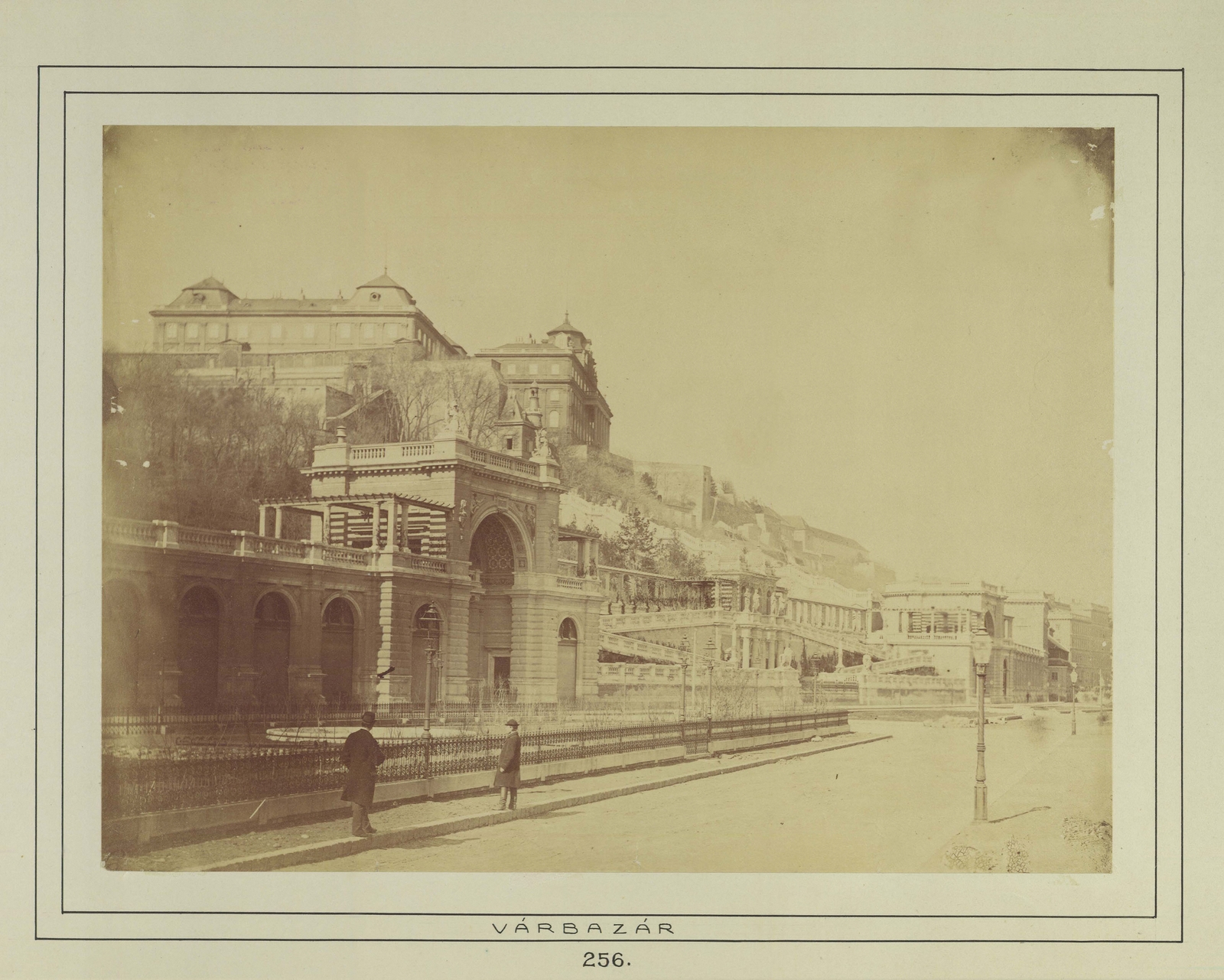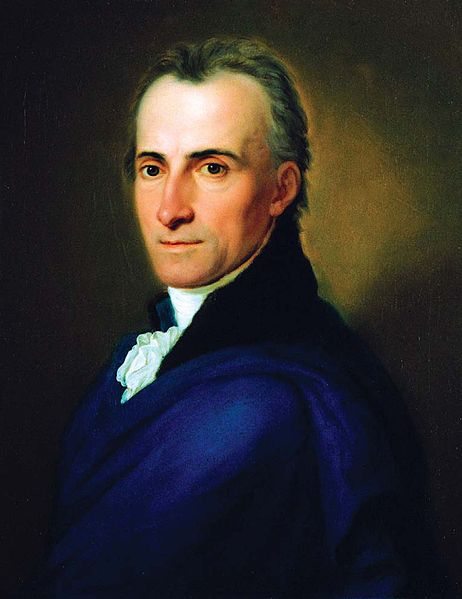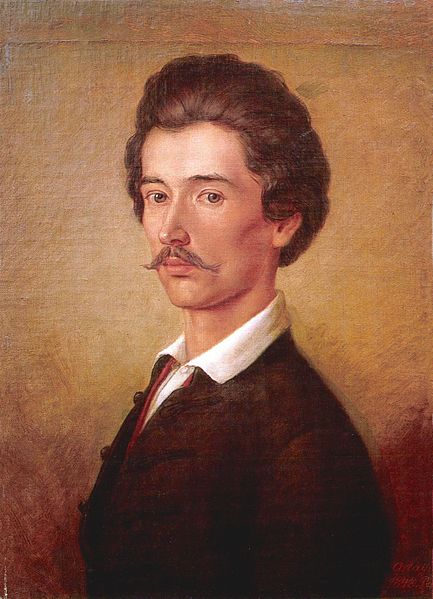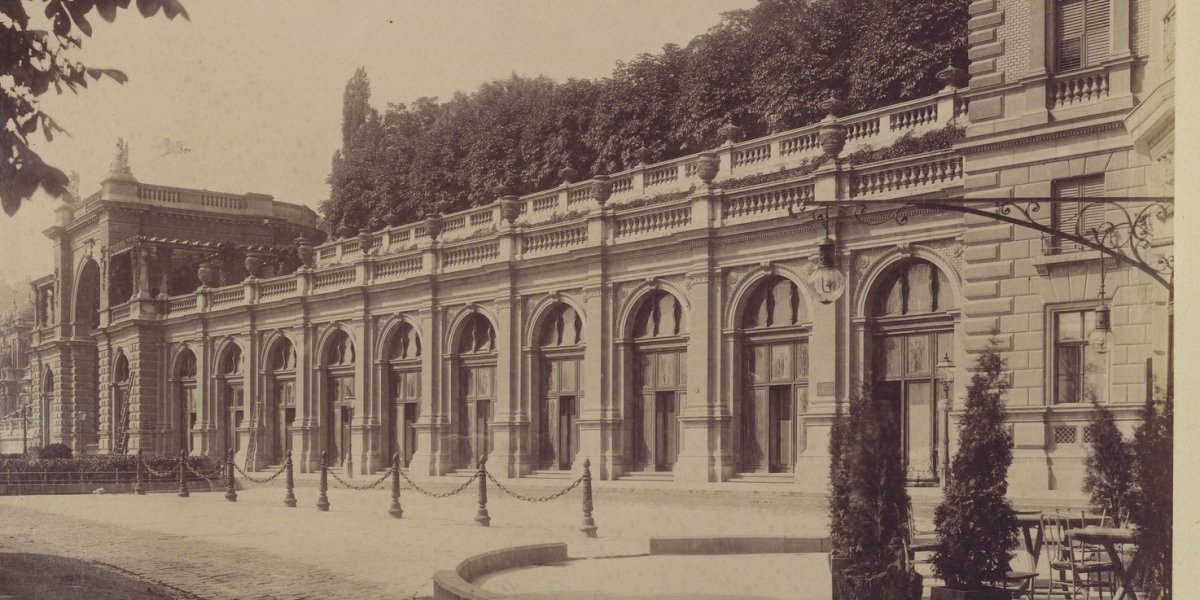The second half of the 19th century in Hungary was dominated by economic growth and the formation of new cultural and social norms. Citizens of the time had some right to believe the country had “made it.” Rising above the gloomy past, and turbulent centuries, the years of happy development and prosperity had come. This optimism was a general trend at the time, on an international scale.
What could have better expressed this sentiment than a demonstration of the great figures of Hungarian history? A goal best served, as the organisers believed, by a thematic portrait exhibition.
Launching the initiative of creating a historical “hall of fame” the painter Miklós Barabás, the politician and journalist Ferenc Fenyvessy and Károly P. Szathmáry published a “Memoranda” in the 14 November 1882 issue of the Nemzet periodical.

The Castle Garden Bazaar was initially intended as an elegant line of high-end shops but excelled in another purpose. A royal decree allowed the exhibition within the walls of the Bazaar (Photo: Fortepan, Budapest Archives. Reference no.: HU.BFL.XV.19.d.1.06.062, photographs by György Klösz)
In the article, the authors listed political and academic arguments, as well as considerations of national security – adding safeguards to ensure that only truly valuable works would be included in the exhibition.
The initiative was received with widespread enthusiasm. Donations began pouring in, and the idea was close to realisation when the king, Franz Joseph allowed the exhibition to move into the ground floor of the Castle Garden Bazaar. According to the 20 May 1884 issue of Budapest Hírlap in response to an interpolation submitted regarding the portrait gallery, the Minister for Culture, Ágoston Trefort told the National Assembly the following:
“The question of the space has been settled after His Majesty has allowed this gallery to be placed in the garden building in front of the Royal Palace, the so-called bazaar. (Loud applause) The room will be handed over to the Ministry of Public Education in the next few days. Steps will then be taken to set up the hall, and the Minister hopes to announce to this house that the collection is ready next autumn.”
The National Assembly designated one thousand forints for the implementation, but the amount proved too small. The final accounts act of 1884 shows that 15 thousand forints were spent on the gallery within the same year.

The portrait of Ferenc Kazinczy by János Donáth was on display.
The ten rooms of the exhibition were designed in the Castle Garden Bazaar. However, the gallery only opened in January 1886, despite the Pesti Napló writing on 3 October 1884 that:
“The premises of the historic portrait hall in the lower shop line of the castle bazaar are nearly complete and waiting for the portraits and furnishings of the gallery. The walls of the ten connecting rooms are covered in wooden panels and walnut-coloured oil paint. A strong leather canvas has been stretched between the frames. Strong copper clips have been installed along the top of the frames to support the portraits. The organisers of the space are now awaiting orders from the Minister on how the portraits should be placed.”
Károly Pulszky was charged with organising the exhibition. At the beginning of 1885, he claimed that the collection of the portraits caused the delay and that sorting through the material took time. The Portrait Gallery of Hungarian History was opened by Minister for Public Education, Ágoston Trefort and a celebrating crowd at 11 a.m on 17 January 1886. On 18 January 1886, the Pesti Napló wrote:
“This is not a large-scale gallery housed in a well-lit building, but a small, modest collection of portraits depicting the statesmen who achieved great things in the struggle for prosperity and the glory of Hungary. In the absence of a more suitable space, wing of the Castle Garden Bazaar nearer to the Tabán of Buda houses the 164 historical images, which, due to its fine furnishings and clarity makes a pleasant impression on the viewer.”
As indicated, the collection of 164 images was not complete. Visitors felt something was amiss when the gallery began with the Hunyadis, and seemingly overlooked the first 450 years of the Hungarian state.
Although the article cited above writes about statesmen, this simply illustrates the language use of the era. Women appeared in almost every room if they were figures of power or influential in their time. A portrait of Zsuzsanna Lorántffy was displayed in the second room.
The third room presented the Rákóczi family, with Prince Ferenc Rákóczi II featuring prominently. Two women could be seen in this hall, Ilona Zrínyi and the prince’s wife, Charlotte Amalie von Hessen-Wanfried.
The fourth room presented Maria Theresa and renowned personalities of her time. The final halls showcased famous personalities from the 19th century, including Palatine Joseph, István Széchenyi, and Ferenc Deák. Ferenc Szentmarjai, who was executed because of the Martinovics conspiracy, and several artists, such as Sándor Petőfi were also included.

The portrait of Sándor Petőfi, by Soma Orlai Petrich
Not only portraits were exhibited. For example, a wooden relief depicted the reconquest of Buda in 1686. Miklós Barabás’s painting of the laying of the foundation stone of Chain Bridge was also included.
The Portrait Gallery of Hungarian History was then expanded continually, but due to moisture in the Castle Garden Bazaar walls, a new venue was needed. In 1890 and 1891, the Minister for Religion and Public Education asked the capital to allow the exhibition to be moved into the old Kunsthalle in City park.
Initially, the council refused the request, stating it wished to lease the building for commercial purposes. The city rejected the second request claiming that the public, and City Park, were in dire need of a proper restaurant in the area, according to the Official City Gazette published on 22 September 1891.
Eventually, an agreement was reached, and the exhibition moved to the old Kunsthalle building in City Park.
Cover photo: The Castle Garden Bazaar photographed by György Klösz (Source: Fortepan, Budapest Archives. Reference no.: HU.Bfl.xv.19.d.1.08.090)




































Hozzászólások
Log in or register to comment!
Login Registration